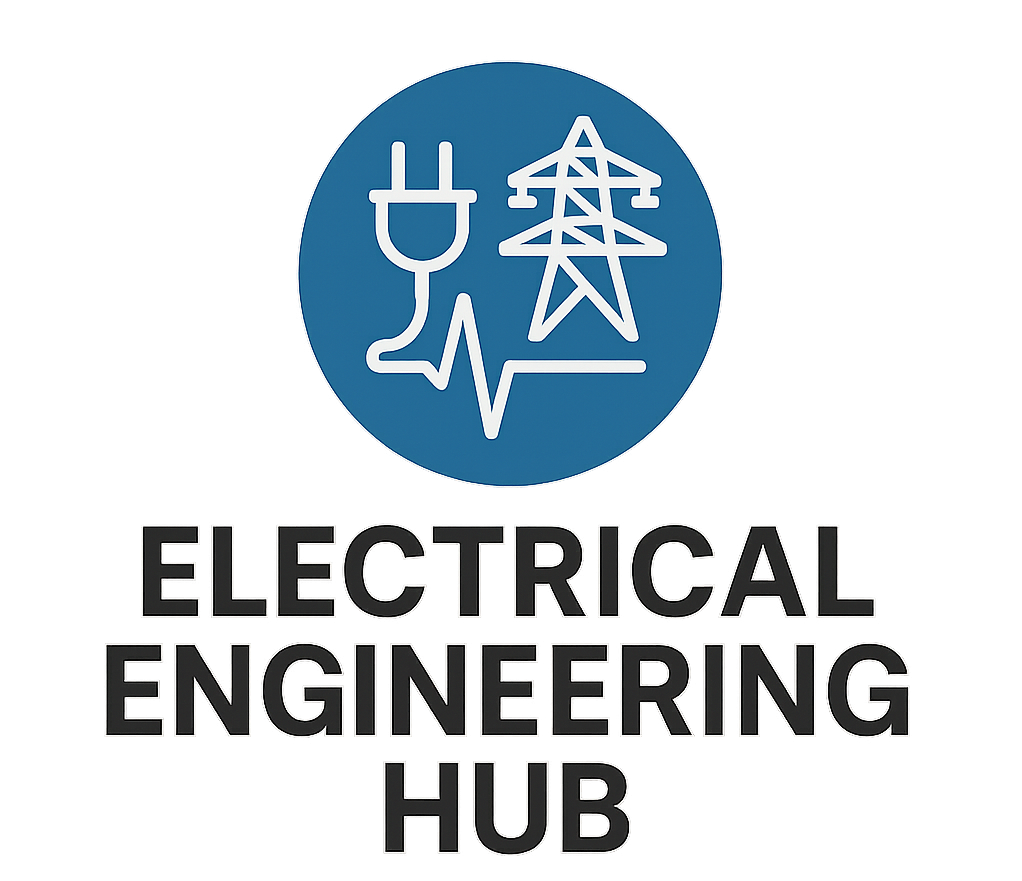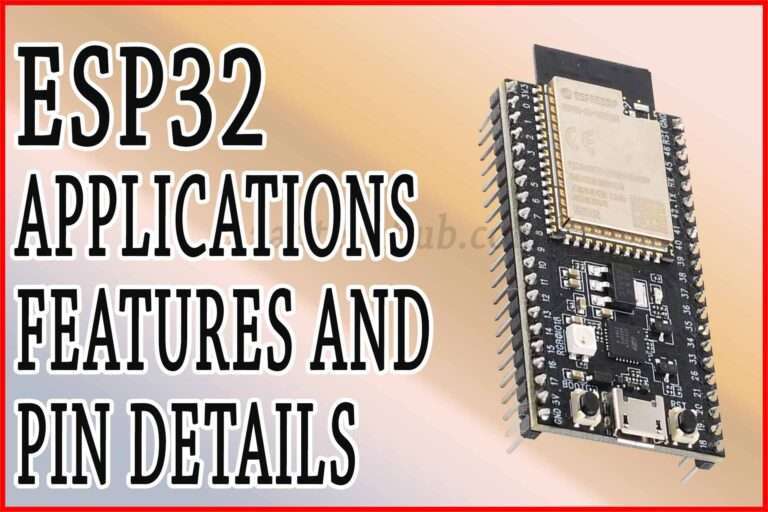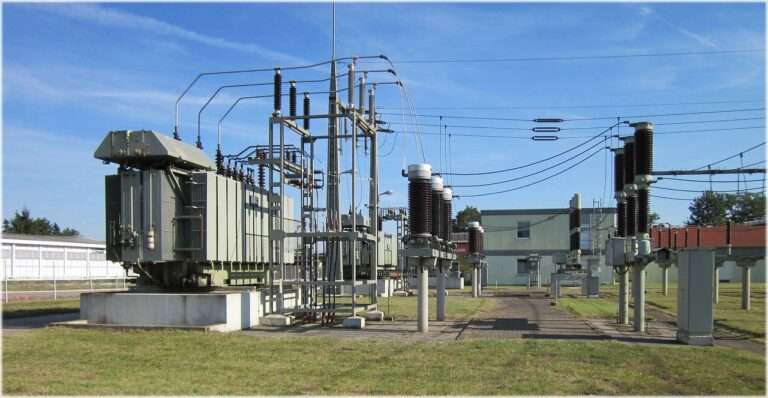TOP 60 Stepper Motor Interview Questions: Best Guide
As individuals venture into the domain of electrical engineering interviews, particularly those centered on stepper motors, they encounter a rich tapestry of inquiries designed to assess their expertise and proficiency in this specialized field. The landscape of Stepper Motor Interview Questions spans beyond conventional technical evaluations, delving into the intricate workings and practical applications of these precise motion-control devices.
Candidates preparing for these interviews face a diverse array of challenges encapsulated within Stepper Motor Interview Questions, illuminating the multifaceted nature of these motors and their pivotal role in various industries.
Stepper Motor Interview Questions
Navigating the terrain of Stepper Motor Interview Questions demands more than textbook knowledge; it necessitates a holistic understanding of stepper motors, encompassing their operational principles, control mechanisms, and real-world applications.

Table of Contents
These questions serve as a litmus test for candidates, evaluating not just their theoretical grasp but also their ability to troubleshoot and apply their knowledge to practical scenarios. Excelling in responses to Stepper Motor Interview Questions requires candidates to showcase their depth of comprehension, highlighting their prowess in handling diverse complexities embedded within the domain of stepper motors.
1. What is a stepper motor, and how does it differ from other types of motors?
A stepper motor is a precise, digital actuator that rotates in fixed angular increments known as steps. Unlike conventional motors, it moves in precise steps rather than continuous rotation, allowing for accurate position control.
2. What are the primary applications of stepper motors?
Stepper motors are extensively used in various applications, including 3D printers, CNC machines, robotics, automated equipment, medical devices, and camera systems, where precise positioning and control are crucial.
3. How does a stepper motor work?
Stepper motors work by converting electrical pulses into mechanical motion. Each pulse rotates the motor by a fixed angle (step), enabling precise control over rotation and position.
4. What are the key components of a stepper motor system?
A stepper motor system typically consists of the stepper motor itself, a driver or controller, power supply, and sometimes additional accessories like encoders or limit switches for improved control and feedback.
5. What factors should be considered when selecting a stepper motor for a specific application?
Important considerations include torque requirements, step resolution, operating speed, power supply voltage, and the physical size of the motor, tailored to the application’s needs.
6. Can you explain the differences between bipolar and unipolar stepper motors?
Bipolar stepper motors have two coils and require an H-bridge driver for control, offering higher torque. Unipolar motors have additional center-tapped coils and can be driven with simpler circuitry but generally provide lower torque.
7. How does microstepping improve stepper motor performance?
Microstepping divides each step into smaller increments, allowing for smoother motion, reduced vibration, and increased accuracy by providing finer control over the motor’s position.
8. What are the advantages of using a closed-loop control system with stepper motors?
Closed-loop systems incorporate feedback mechanisms (like encoders) to correct errors, enhancing accuracy, reducing the effects of motor stalling or skipping steps, and improving overall reliability.
9. Can you discuss the limitations of stepper motors, especially in high-speed or high-torque applications?
Stepper motors might experience reduced torque at higher speeds and are generally less efficient compared to some other motor types. They may also experience resonance issues at specific speeds.
10. How does the choice between full-step and half-step modes affect stepper motor performance?
Full-step mode provides higher torque but less resolution, while half-step mode increases resolution but may reduce torque slightly, impacting motor performance based on the application’s requirements.
11. What role does holding torque play in stepper motor applications, and how does it impact motor selection?
Holding torque is the static torque required to maintain the motor’s position without rotation. It’s crucial for holding a position when the motor is not moving and influences motor selection based on the load requirements.
12. Can you explain the significance of step angle in stepper motors and its relation to motor resolution?
Step angle defines the angular rotation per step. Smaller step angles result in higher resolution, providing finer control over the motor’s movement.
13. How does resonance affect stepper motor performance, and what measures can be taken to mitigate resonance issues?
Resonance causes vibrations and can lead to missed steps or inaccuracies in motion. Damping techniques, changing step rates, or using microstepping can help alleviate resonance effects.
14. Discuss the impact of heat generation on stepper motor performance and potential methods for managing heat dissipation.
Heat affects motor efficiency and can lead to performance degradation or even damage. Adequate cooling methods, like heatsinks or forced air ventilation, help dissipate heat.
15. What factors should be considered when selecting the appropriate stepper motor driver for an application?
Choosing a stepper motor driver involves assessing voltage and current ratings, microstepping capability, communication interfaces, and protective features suitable for the motor and application.
16. Can you elaborate on the differences between single-stack and multi-stack stepper motors and their applications?
Single-stack motors have one coil per phase, suitable for low-power applications. Multi-stack motors have multiple coils per phase, offering higher torque output for more demanding applications.
17. Explain the impact of back EMF (Electromotive Force) in stepper motor operation and measures to control its effects.
Back EMF generates voltage when the motor rotates, influencing motor speed and performance. Using clamping diodes or snubber circuits can help control back EMF.
18. How does the resonance frequency of a stepper motor system affect its stability and performance during operation?
Resonance frequency, when matched or close to the system’s operating frequencies, can cause instability or erratic motion. Adjusting speeds or employing damping methods helps manage this.
19. Discuss the benefits and limitations of using closed-loop stepper motor control systems compared to open-loop systems.
Closed-loop systems offer enhanced accuracy and reliability by providing feedback for error correction but might be costlier and more complex compared to simpler open-loop systems.
20. What advancements or emerging technologies are shaping the future of stepper motors in industrial and consumer applications?
Technological advancements in materials, miniaturization, and control algorithms are enhancing stepper motor efficiency, precision, and integration in various applications.
21. Explain the concept of detent torque in stepper motors and its significance in motor behavior.
Detent torque refers to the holding force between steps when the motor is stationary. It’s essential for maintaining position stability but can vary among motor designs.
22. How does the selection of the power supply voltage impact stepper motor performance and efficiency?
Voltage directly influences motor speed and torque capabilities. Higher voltages can enhance performance, but exceeding motor specifications can lead to overheating.
23. Discuss the effects of resonance on stepper motor systems and methods to identify and mitigate resonance issues.
Resonance can lead to motor instability or missed steps. To identify resonance frequencies, perform frequency sweeps and apply damping or adjust step rates to mitigate effects.
24. Can you elaborate on the differences between series and parallel stepper motor connections and their effects on motor operation?
Series connections offer higher resistance and lower current but lower speed, while parallel connections provide higher speed with increased current demands, impacting motor behavior.
25. Explain the significance of acceleration and deceleration ramps in controlling stepper motor speed and motion profiles.
Acceleration and deceleration ramps define the rate at which the motor accelerates or decelerates, ensuring smooth and controlled movements, reducing mechanical stress.
26. How does microstepping technology enhance stepper motor performance, and what are its limitations?
Microstepping subdivides steps into smaller increments, offering smoother motion and increased resolution. However, it might reduce torque at higher microstep levels.
27. Discuss the impact of motor resonance on stepper motor stability and measures to prevent resonance-related issues.
Motor resonance can cause oscillations or vibrations. Employing microstepping, altering step rates, or using mechanical damping can help prevent or minimize resonance effects.
28. What factors should be considered when selecting a stepper motor’s step angle for a specific application?
Choosing an appropriate step angle involves considering the required precision, resolution, and load characteristics to ensure optimal motor performance.
29. Can you explain the benefits of using closed-loop stepper motor control systems in high-precision applications?
Closed-loop systems provide enhanced accuracy, preventing position errors and missed steps by using feedback to correct deviations, ensuring precise control.
30. How do stepper motor drivers manage current and voltage to control motor operation, and what are their key features?
Stepper motor drivers regulate current and voltage to ensure precise step control, incorporating features like current limiting, microstepping, and overcurrent protection.
31. Explain the concept of step resolution in stepper motors and its impact on motor accuracy and precision.
Step resolution defines the smallest angle the motor can rotate, influencing the accuracy and precision of positioning. Higher resolution allows finer control.
32. Can you discuss the significance of backlash in mechanical systems using stepper motors and strategies to minimize its effects?
Backlash represents mechanical play affecting accuracy. Techniques like using anti-backlash gears or software compensation help reduce or eliminate backlash.
33. How do stepper motors handle overloading or stalling conditions, and what protective measures are employed in such situations?
Stepper motors might lose steps when overloaded or stalled, risking position errors. Current limiting, feedback systems, or torque monitoring help prevent damage.
Know more about how to select overload relay for motor
34. Discuss the impact of motor winding configurations, such as bipolar and unipolar, on stepper motor performance and control.
Bipolar winding configurations offer higher torque, while unipolar configurations provide simpler control but with lower torque capabilities.
35. Can you explain the advantages and limitations of using lead screws versus ball screws in stepper motor-driven systems?
Lead screws are cost-effective but might have higher friction, impacting efficiency. Ball screws offer higher precision and lower friction but at a higher cost.
36. Explain the role of current chopper circuits in stepper motor drivers and their benefits in controlling motor current.
Current chopper circuits regulate motor current, ensuring consistency and preventing overheating by controlling the voltage supplied to the motor.
37. How does the choice of stepper motor type, such as permanent magnet or hybrid, impact motor performance and applications?
Permanent magnet motors offer lower cost and lower torque, while hybrid motors provide higher torque and better performance, often at a higher cost.
38. Discuss the significance of torque-speed characteristics in stepper motors and their influence on motor selection for specific applications.
Torque-speed characteristics define a motor’s ability to produce torque at varying speeds, impacting performance and suitability for different load requirements.
39. Can you explain the effects of resonance damping methods on stepper motor stability and system performance?
Resonance damping methods like microstepping or mechanical dampers help reduce vibrations and ensure stable motor operation, enhancing overall system performance.
40. What advancements or technological trends are shaping the future of stepper motors in industries like robotics, automation, and manufacturing?
Technological advancements in control algorithms, materials, and integration with IoT are enhancing stepper motor efficiency, precision, and applicability in diverse industrial sectors.
41. Discuss the impact of load characteristics on stepper motor performance and selection.
Load characteristics, including inertia, friction, and variations, affect motor torque requirements, speed, and overall performance, influencing motor selection.
42. Can you explain the differences between single-step and multi-step operation modes in stepper motors and their effects on motor behavior?
Single-step mode rotates the motor one step per pulse, while multi-step mode allows multiple steps per pulse, influencing speed, resolution, and torque output.
43. How does the winding inductance affect stepper motor performance, and what methods can be used to manage inductance effects?
Higher winding inductance may limit motor speed due to delayed current changes. Using advanced driver technologies or higher voltage supplies can help manage inductance effects.
44. Discuss the significance of rotor inertia in stepper motors and its impact on motor response and speed changes.
Rotor inertia affects motor acceleration, response time, and the ability to quickly change speeds. Lower rotor inertia enables faster speed changes and better response.
45. How does temperature variation impact stepper motor performance, and what measures can be taken to manage temperature effects?
Temperature changes can affect motor efficiency and performance. Adequate cooling, thermal management, or derating motor operation help manage temperature effects.
46. Explain the benefits and limitations of using closed-loop control systems with stepper motors in high-precision applications.
Closed-loop control systems offer enhanced accuracy and error correction but might introduce complexity and cost compared to simpler open-loop systems.
47. Discuss the significance of driver algorithms, such as microstepping and interpolation, in controlling stepper motor motion and accuracy.
Microstepping divides steps into smaller increments, offering smoother motion and increased resolution. Interpolation enhances motion profiles, optimizing accuracy.
48. Can you elaborate on the impact of resonance suppression techniques on stepper motor stability and overall system reliability?
Resonance suppression techniques, like adaptive control algorithms or mechanical dampers, reduce vibrations, ensuring stable motor operation and system reliability.
49. How do stepper motors manage power consumption, and what strategies can be employed to optimize energy efficiency?
Stepper motors consume power based on the workload. Employing energy-efficient drivers, appropriate voltage supplies, or using low-power modes during idle periods optimize energy usage.
50. What future advancements or emerging technologies are expected to influence the evolution of stepper motors in various industries?
Technological advancements in smart control systems, AI integration, and material sciences are expected to enhance stepper motor efficiency, precision, and integration in diverse industrial applications.
51. Explain the significance of step sequencing in stepper motors and its role in controlling motor movement.
Step sequencing determines the sequence and timing of pulses, controlling the motor’s rotation and direction of movement.
52. Can you discuss the impact of microcontroller selection on stepper motor control in embedded systems?
Choosing the right microcontroller affects the execution speed and efficiency of control algorithms, influencing the precision and response of stepper motor systems.
53. How does the choice between half-step and full-step modes influence motor smoothness and torque characteristics?
Half-step mode provides smoother motion but might compromise torque, while full-step mode offers higher torque but with potentially less smooth motion.
54. Discuss the benefits and drawbacks of using gear reduction mechanisms with stepper motors.
Gear reduction mechanisms increase torque while reducing speed, enhancing the motor’s ability to handle higher loads but potentially affecting overall system accuracy.
55. Can you explain the role of resonance frequency in stepper motor systems and measures to avoid resonance-related issues?
Resonance frequency causes oscillations or vibrations, potentially leading to missed steps. Adjusting motor speed, using microstepping, or adding damping techniques help avoid resonance issues.
56. Explain the impact of electrical noise and interference on stepper motor operation and strategies to mitigate these effects.
Electrical noise can disrupt signals, affecting motor performance. Employing shielding, filtering, or proper grounding minimizes interference in stepper motor systems.
57. Discuss the significance of step resolution and its relationship with the mechanical system’s precision in stepper motor applications.
Step resolution determines the motor’s smallest movement increment, directly impacting the system’s precision and the ability to control positioning accurately.
58. How do stepper motors handle load variations and inertia mismatches, and what measures are taken to ensure optimal performance?
Stepper motors might experience performance variations with load changes. Proper motor sizing, tuning, or using closed-loop systems help manage load variations for optimal performance.
59. Can you elaborate on the advantages and challenges of using closed-loop systems with stepper motors for accurate position control?
Closed-loop systems offer accurate position control by providing feedback but might introduce complexity and cost compared to open-loop systems.
60. What potential innovations or advancements do you foresee influencing the future development of stepper motors in industrial automation?
Advancements in control algorithms, miniaturization, and integration with IoT technologies are likely to drive stepper motor efficiency, precision, and adaptability in industrial automation applications.
As we conclude the exploration of Stepper Motor Interview Questions, it becomes evident that these inquiries transcend the conventional boundaries of technical evaluations. They serve as gateways, inviting aspiring engineers into a world where theoretical knowledge meets practical application.
Engaging with these questions isn’t just a preparatory exercise for an interview; it’s a journey of comprehending the intricate dance of motion control that stepper motors orchestrate in numerous technological landscapes.
The depth and breadth encapsulated within Stepper Motor Interview Questions underscore the importance of a well-rounded understanding that spans beyond the theoretical aspects. Excelling in these inquiries signifies not only a grasp of stepper motor dynamics but also an adaptability to navigate through the challenges these devices present in real-world scenarios.
Preparing for these questions equips candidates not just for an interview, but for a future where their expertise in stepper motors becomes a catalyst for innovation and problem-solving in the ever-evolving field of electrical engineering.
Worth Read Posts
Follow Us on Social:
Subscribe our Newsletter on Electrical Insights for latest updates from Electrical Engineering Hub
#StepperMotor, #StepperMotorQuestions, #MotorInterviewPrep, #ElectricalEngineering, #StepperMotorBasics, #InterviewTips, #EngineeringJobs, #StepperMotorControl, #MotorControlSystems, #TechnicalInterview, #AutomationEngineering, #Mechatronics, #ElectronicsInterview, #MotorTypes, #HardwareEngineering




